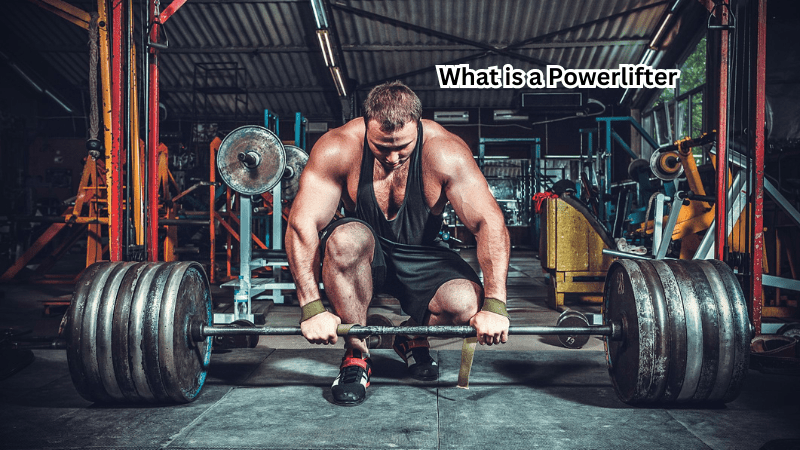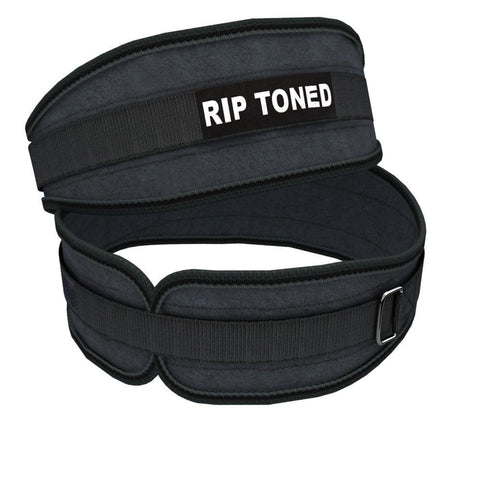
What is a Powerlifter
Share
Powerlifting is a dynamic and challenging sport that centers on the pursuit of maximal strength in three fundamental lifts: the squat, bench press, and deadlift. As it grows in popularity, powerlifting attracts individuals driven by the desire to push their physical limits and compete at various levels.
A powerlifter is defined not just by their impressive strength but also by their unwavering dedication, disciplined training regime, and competitive mindset. With its roots in strength training, powerlifting offers participants a unique blend of physical and mental challenges, encouraging athletes to achieve personal records and excel in competitions.
This blog post delves into the fascinating world of powerlifting and the passionate individuals who make it their sport of choice.
Definition of Powerlifter
A powerlifter is an athlete who competes in powerlifting, which focuses on maximal strength in three lifts: squat, bench press, and deadlift. Powerlifters are known for their immense physical strength and dedication to training, with the ultimate goal of achieving personal records and success in competitions.
In addition to their remarkable physical abilities, powerlifters possess a competitive mindset that drives them to continuously push their limits and strive for excellence. This dedication often leads to strict training regimes and disciplined lifestyles, as well as a strong mental fortitude to overcome obstacles and setbacks.
Powerlifters come from all walks of life and backgrounds, united by their passion for this dynamic and challenging sport. They often train in specific techniques and movements to optimize their performance, making powerlifting not only a test of strength but also a display of skill and technique.
Key Characteristics and Goals of Powerlifters
Powerlifters possess a unique set of characteristics and goals that make them stand out as athletes. Here are some key traits and objectives commonly found among powerlifters:
Physical Strength:
One of the main defining features of powerlifters is their incredible physical strength. This is achieved through rigorous training and proper nutrition, with a focus on building muscle mass, improving muscular endurance, and increasing overall strength.
Dedication to Training:
Powerlifting requires immense dedication to training. Powerlifters follow strict training regimes designed to improve their performance in the three fundamental lifts: squat, bench press, and deadlift. They also incorporate accessory exercises that target muscles used in these lifts to develop an all-around strong and balanced physique.
Pursuit of Personal Records:
Powerlifters are constantly striving to set personal records (PRs) in their lifts. These are the highest weights an athlete can lift for a given exercise, and achieving new PRs is a significant accomplishment for powerlifters. This pursuit of improvement motivates many athletes to push themselves beyond their limits and strive for greatness.
Competitive Mindset:
Powerlifting competitions bring together some of the strongest individuals in the world, creating a highly competitive environment. Powerlifters possess a strong competitive mindset that drives them to not only compete against others but also challenge themselves to be better than they were yesterday.
Mental Fortitude:
Training for powerlifting requires a tremendous amount of mental fortitude. Powerlifters must continuously push themselves beyond their physical limits, endure grueling training sessions, and overcome setbacks and injuries. Mental toughness is vital in this sport, as it allows powerlifters to persevere through challenges and maintain focus on their goals.
These are just a few key characteristics and goals that make powerlifters unique. Their unwavering dedication, competitive mindset, and constant pursuit of excellence make them extraordinary athletes in strength sports.
Breakdown of the Three Main Lifts
Powerlifting consists of three main lifts: squat, bench press, and deadlift. These exercises are carefully chosen for their ability to test an athlete's strength and technique in different ways. Let's take a closer look at each lift and its role in powerlifting:
Squat:
The squat is considered the king of all exercises by many powerlifters. It involves lifting a weighted barbell from a rack on the back of one's shoulders and then lowering it until the hips are below the knees before standing back up. The squat targets muscles in the lower body, including the quadriceps, hamstrings, glutes, and calves.
Bench Press:
The bench press is a popular exercise among powerlifters, as it focuses on the upper body muscles. It involves lying on a bench and pressing a weighted barbell upward from the chest until the arms are fully extended. The bench press primarily targets the chest, shoulders, and triceps.
Deadlift:
Considered one of the most challenging exercises in powerlifting, the deadlift involves lifting a loaded barbell from the ground to hip level with locked knees. This exercise targets muscles in the lower back, glutes, hamstrings, and core.
Each of these lifts requires proper form and technique to maximize strength and prevent injury. Powerlifters often spend hours perfecting their form through various drills and training methods to gain a competitive edge in their lifts.
These three main lifts, along with accessory exercises, form the foundation of a powerlifter's training regime. By continuously honing their skills and pushing their limits in these lifts, powerlifters aim to reach new personal records and achieve success in competitions.
Benefits of Powerlifting
Aside from the physical and mental challenges, powerlifting offers various benefits for athletes and anyone looking to improve their strength and fitness levels. Some of these benefits include:
Increased Strength:
Powerlifting is an excellent way to increase overall strength in the body. By consistently training with heavy weights, powerlifters can develop muscular strength, endurance, and size.
Improved Bone Density:
The intense weight-bearing exercise involved in powerlifting has been proven to improve bone density and reduce the risk of osteoporosis.
Enhanced Muscular Endurance:
Powerlifting requires prolonged periods of exertion during training sessions, which improves muscular endurance over time. This increased endurance can benefit other sports or daily activities that require physical stamina.
Mental Resilience:
Powerlifting requires a significant amount of mental resilience, which can help individuals develop a strong mindset and overcome challenges in other areas of life.
Increased Confidence:
Seeing improvements in strength and setting new personal records can greatly boost powerlifters' self-confidence and self-esteem.
Training and Diet Regimen of Powerlifters
Training and proper nutrition are essential components of a powerlifter's routine. Here are some common training methods and dietary practices followed by powerlifters:
Training:
Powerlifting training involves lifting heavy weights, typically between 1-5 repetitions per set. These low-rep sets allow maximum effort on each lift without fatiguing the muscles too quickly. Powerlifters also incorporate high-volume accessory exercises to target specific muscle groups in their main lifts.
Some popular training methods utilized by powerlifters include:
- Periodization: This method involves breaking down the training schedule into distinct periods with varying intensities to prevent plateaus and promote continual progress.
- Progressive Overload: Powerlifters continually aim to increase the weights they lift in small increments over time, promoting strength gains and muscle growth.
- Deloading: This involves reducing training intensity and volume for a week or two to allow the body to recover from intense training and prevent injury.
Diet:
Powerlifters often follow a high-calorie diet rich in protein, complex carbohydrates, and healthy fats. They require more calories than the average person due to their high-intensity training. Some common dietary practices among powerlifters include:
- Eating multiple meals throughout the day to ensure sufficient intake of nutrients and calories
- Consuming a high-protein meal after each workout session to aid in muscle recovery and growth
- Tracking macros (protein, carbohydrates, and fats) to ensure a balanced diet that supports their training goals.
Overall, the intense training and strict dietary practices of powerlifters allow them to achieve optimal strength levels and maximize their performance on the platform.
What are the Challenges of Powerlifting?
While powerlifting offers numerous benefits, it also comes with its own set of challenges. Some common challenges faced by powerlifters include:
- Injuries: With the heavy weights and intense training involved in powerlifting, injuries are a real risk. Powerlifters must take extra precautions to prevent and treat injuries.
- Plateaus: As with any sport or fitness regimen, progress can reach a plateau at times. This can be frustrating for powerlifters who strive for continual improvement.
- Competition Pressure: Powerlifting competitions require athletes to perform at their best in front of judges and spectators. This pressure can be overwhelming and affect performance.
- Balancing Training with Daily Life: Powerlifters must dedicate a significant amount of time to training and proper nutrition, which can be challenging to balance with other responsibilities such as work or family.
- Cost: The equipment required for powerlifting, such as barbells, weight plates, and specialized shoes, can be expensive. This can be a barrier for some individuals looking to get into the sport.
Despite these challenges, the world's raw powerlifting federation's dedicated powerlifters continue to push through and overcome obstacles in pursuit of their goals.
FAQs
What is a powerlifter, and how does it differ from Olympic weightlifting?
A powerlifter is an athlete who competes in lifting weights focused on three main exercises: squat, bench press, and deadlift. Unlike Olympic lifting, which includes snatch and clean & jerk, powerlifting focuses on maximizing strength in these specific lifts.
How do weight classes affect powerlifters?
Weight classes categorize powerlifters based on their body weight, ensuring fair competition. Athletes compete against others in the same weight class, which helps to standardize performances across different body sizes.
How does powerlifting help in reducing body fat while maximizing muscle mass?
Powerlifting, combined with resistance training, helps reduce body fat and maximize muscle mass by focusing on heavy, compound movements. This type of weight training increases muscle definition and overall strength.
What role does powerlifting equipment play for powerlifters?
Powerlifting equipment, such as belts, knee sleeves, and specialized shoes, helps powerlifters safely lift heavier weights. Proper equipment supports the body during heavy lifts, contributing to improved performance and safety in the sport.
Conclusion
In conclusion, powerlifting is a remarkable sport that combines physical strength with mental resilience. We've explored the defining characteristics of powerlifters, including their relentless dedication and focus on the squat, bench presses, and deadlift. Powerlifting not only enhances muscle mass and bone density but also fosters confidence and mental fortitude.
Despite challenges such as the risk of injury and the need for rigorous training, powerlifters thrive in a supportive community that celebrates personal achievements and competitive spirit.
Whether seeking new fitness goals or considering competitive ambitions, powerlifting offers a rewarding journey. Embrace the challenge, join the community, and discover the transformative power of this incredible sport.

